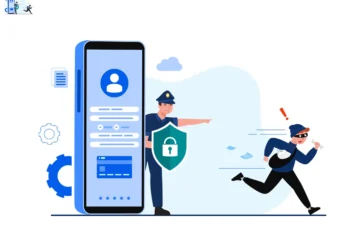Table of Contents
Digital Security

In an era defined by digital transformation, the increasing reliance on technology has opened new avenues for convenience and efficiency. However, it has also introduced new cybersecurity challenges. While robust digital security systems are essential, one often overlooked aspect remains the most significant vulnerability – the human factor. Employees and individuals can unintentionally become the weakest link in the security chain, falling prey to social engineering and phishing attacks. In this blog, we will explore the critical role of training and awareness in strengthening the human factor of digital security.
The Human Factor: A Double-Edged Sword
Humans are an indispensable part of any organization, and their knowledge, skills, and creativity drive progress. However, they can also inadvertently expose the organization to security risks due to lack of awareness and training. Cybercriminals exploit human vulnerabilities, manipulating individuals into divulging sensitive information or clicking on malicious links, leading to devastating consequences.
The Importance of Training and Awareness
Empowering employees and individuals with cybersecurity training and awareness programs is an indispensable investment for any organization. The following reasons underscore the significance of these initiatives:
Recognizing Phishing and Social Engineering: Education equips individuals to identify phishing emails, social engineering tactics, and suspicious messages, reducing the likelihood of falling victim to cyberattacks.
Protecting Sensitive Information: Training helps employees understand the importance of safeguarding sensitive information, ensuring data remains confidential and secure.
Mitigating Insider Threats: Awareness programs instill a sense of responsibility and loyalty, reducing the risk of insider threats and potential data breaches.
Complying with Data Protection Regulations: Training ensures that employees understand and adhere to data protection regulations, minimizing the risk of non-compliance and associated penalties.
Developing Effective Training and Awareness Programs
Tailored Training Content: Customize training programs to address specific job roles and potential security risks each role might encounter.
Simulated Phishing Exercises: Conduct periodic simulated phishing exercises to test employees’ readiness in identifying phishing attempts and providing immediate feedback.
Interactive and Engaging Content: Utilize interactive and engaging training materials, including videos, quizzes, and workshops, to enhance learning retention and participation.
Leadership Buy-In: Obtain support from top leadership to demonstrate the significance of cybersecurity training, fostering a security-conscious culture throughout the organization.
Continuous Learning: Cybersecurity threats evolve constantly, necessitating ongoing training and awareness programs to keep employees informed about the latest risks and best practices.
Building a Security-Conscious Culture
Beyond individual training, fostering a security-conscious culture is essential for long-term cybersecurity success. Organizations should encourage open communication about security concerns and create an environment where employees feel comfortable reporting potential incidents.
Conclusion
In an age where cybersecurity threats continue to grow in sophistication, training and awareness represent the first line of defense against potential breaches. Recognizing the critical role of the human factor in digital security is vital, as even the most robust security systems can be compromised by human error.
By investing in tailored training programs, engaging content, and a security-conscious culture, organizations can empower employees to become active participants in safeguarding sensitive data and assets. With a united front of educated and vigilant individuals, we can strengthen the human factor in digital security, creating a safer digital environment for businesses, individuals, and society as a whole.



